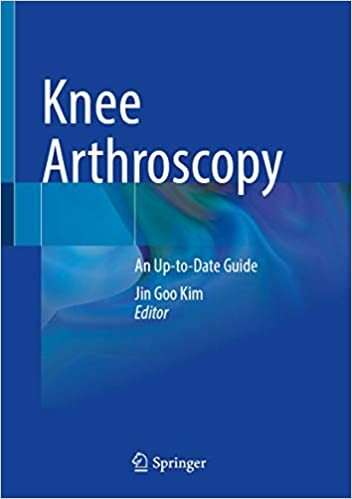
Knee Arthroscopy: An Up-to-Date guide - Ramp lesions
14/06/2021
Ramp lesions chapter. Seil R., Mouton C. Knee Arthroscopy: An Up-to-date guide - © Springer Nature Singapore Pte Ltd. 2021
J. G. Kim (ed.), Knee Arthroscopy, https://doi.org/10.1007/978-981-15-8191-5_18
eBook ISBN978-981-15-8191-5
Hardcover ISBN978-981-15-8190-8
This book provides detailed guidance on knee arthroscopy that reflects the very latest advances in this ever-changing field. Among the techniques covered are reconstruction of the anterior and posterior cruciate ligaments, meniscal repair and transplantation, cartilage repair by means of osteochondral allograft transplantation and autogenous osteochondral transfer, medial patellofemoral ligament reconstruction, and high tibial osteotomy. In each case, clear descriptions of technique are supported by a wealth of high-quality illustrations, with identification of potential pitfalls and how to avoid them. In addition, the latest knowledge is presented on anatomy and biomechanics. The book is written by recognized experts in sports injuries and knee disorders. It will serve as an up-to-date reference for the experienced knee surgeon and an ideal source of information for all who wish to broaden their knowledge of and improve their skills in knee arthroscopy, whether general orthopaedists, orthopaedic trainees, or sports medicine physicians.
Ramp lesions chapter (Seil R., Mouton C.)
Ramp lesions to the posterior horn of the medial meniscus have recently received increased attention due to their high preva- lence in patients undergoing an anterior cru- ciate ligament reconstruction. The diagnosis of these lesions is rarely possible with preop- erative imaging and quite limited with routine anterior arthroscopic inspection of the knee joint. Visual inspection of the posteromedial compartment of the knee joint should thus systematically be carried out via a trans-notch view and meniscocapsular structures directly probed with a needle or visualized via a pos- teromedial portal. While the clinical impact of ramp lesions is not yet well established, recent biomechanical studies have shown increased anteroposterior and rotational laxi- ties when a ramp lesion is present. The latter may thus be a cause for postoperative persis- tent laxity potentially leading to the failure of ACL reconstructions. To date, it remains unclear whether all ramp lesions should be repaired as only a few publications report long-term outcomes after ramp lesion repair. This article provides an overview of the cur- rent knowledge on ramp lesions including their diagnosis, classification, biomechanical relevance as well as treatment and outcomes.
